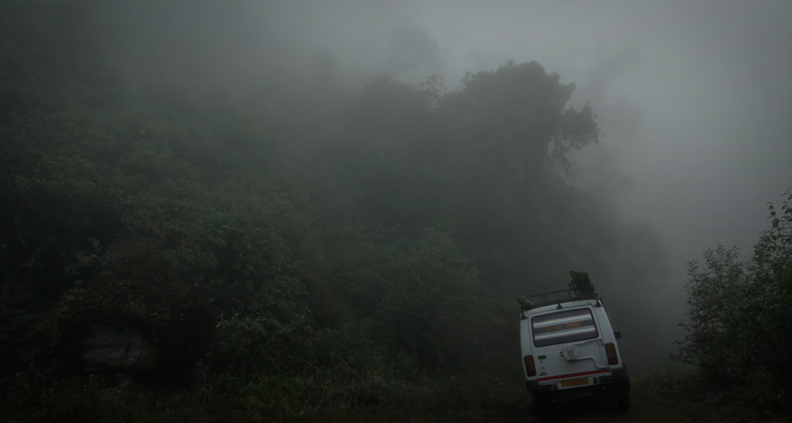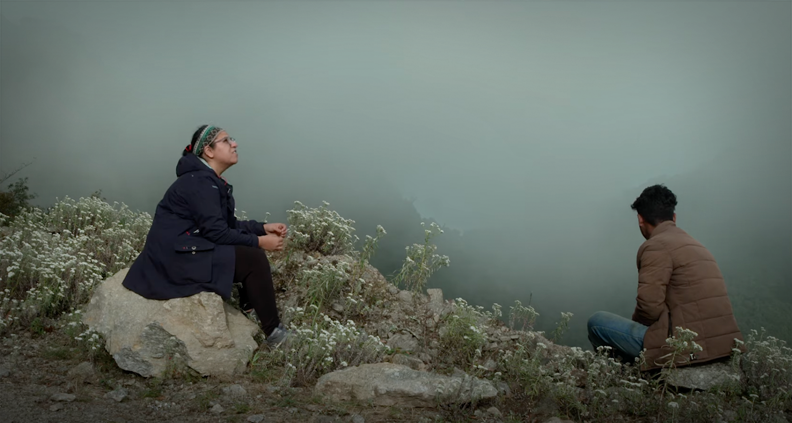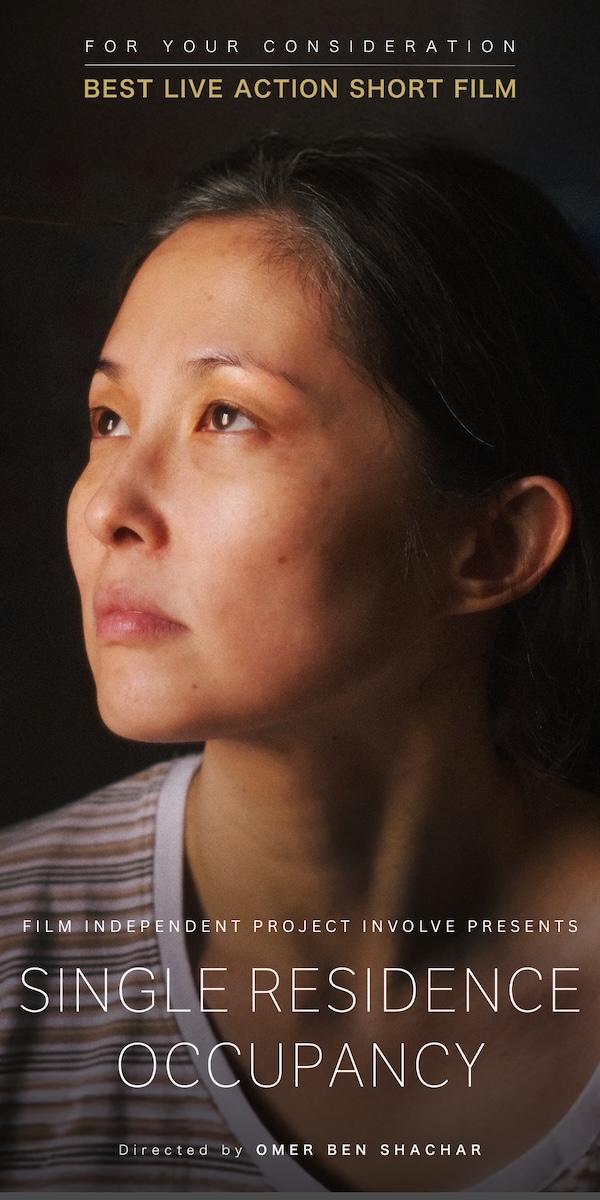A Conversation on ‘Nocturnes’: Part 1
Editor’s Note: Since its World Premiere at the 2024 Sundance Film Festival, winning a special jury prize for craft, Nocturnes has gone on to several accolades, including becoming a New York Times Critic’s Pick. Film Independent connected Indian filmmakers and Global Media Makers Fellows Anupama Srinivasan and Anirban Dutta for a conversation with Emmy Award-winning composer Vivek Maddala.
***
For most of us, an inevitable question arises whenever we consider watching an unfamiliar movie: “What is it about?” Contained within this question is an implicit assumption about the primacy of storyline and narrative. But a lot of great cinema follows an adage, often attributed to Roger Ebert, that “it’s not what a movie’s about, but how it’s about it.” Indeed, the quality of a film (whether fiction or documentary) can lie more in its ability to create a moving experience for the audience, or in its ability to evoke a range of ideas or sentiments, than in the specific topic it’s engaging.
To wit: Nocturnes is a new documentary that ostensibly portrays a scientist studying climate change effects on hawk moths in Northeastern India—a subject I happen to find intrinsically interesting. But even if youdon’t, what will surely draw you into the film is the manner in which the filmmakers have created a transformative aural and visual experience—one that invites you to contemplate space and time with little guidance, and on your own terms. The documentary doesn’t force you into assuming any particular audience role, like rooting for a struggling protagonist; nor does it require your allegiance to specific ideas, like opposing a social injustice. Using an immersive soundtrack and long, visually stunning takes, Nocturnesinspires reflection and meditation on a range of ideas—from the power of observation and the scientific method, to notions of class and gender, to the role of humans in the natural world.
I recently spoke with the filmmakers, Anirban Dutta and Anupama Srinivasan, to explore how the film works. The following is a transcript of our conversation.
Vivek Maddala: One of the central aspects of your documentary that struck me is how it carries us alongside Mansi, the film’s protagonist, to engage with her in observing natural phenomena, questioning the observations, and possibly forming hypotheses—maybe without us even realizing we’re doing it. I’m reminded that a lot of people seem to think of science as a body of knowledge, when in fact it’s really not… it’s a method of inquiry, a procedure we can use to try to understand the natural world. And Nocturnes invites us to participate in that method because we learn things through observation, along with Mansi. The film doesn’t really have an eye-in-the-sky didactic narrator explaining to us about the subject she’s studying, unlike in a lot of nature docs. First, do you agree with my assessment? And can you explain what led you to approach the film in this way?
Anirban Dutta: To pull back and understand the genesis of the idea… you know, living in Delhi can be very stressful. Like in any other city, there is a lot of urban chaos, general restlessness, anxiety, and insomnia that a lot of us face. Add to that, if you have this extreme level of pollution, then you question where you are living. I have two kids. When the film started, more than five years ago, my son was a teen and my daughter was even younger. They could not go out to play anymore. My son has asthma so, frequently, we had to take him for nebulization. So [the kids] stopped going outside and replaced those activities with devices—laptops and mobile phones. Unknowingly, that created a sense of panic and immediacy, like everything has to happen now. “I’m bored, can I do something now?” Both Anu and I were feeling that. We wondered, is there some idea we can pursue in the medium we know? (We know only how to make films.) And we asked, is there a film we can make that will reduce our own anxiety and create a sense of peace and calm in ourselves?
It is just a coincidence that when we were in the Western Himalayas doing some commissioned work (to make a living) in the town of Uttarkashi, we met Mansi who was sitting next to us in a café, and she also seemed unhappy. We got to talking and she told us about this forest in the Eastern Himalayas, her first love, and she described the scene of white canvas cloth, blue lights being switched on at twilight, and thousands of moths converging with various colors, shapes, and sizes to create something mesmerizing. Without even going there, Anu and I looked at each other and said, “it seems like there is a film.” And there was a deeper quest for us, which informed the kind of film we set out to make. From our inner need to look for peace, some calmness… and finding Mansi, resulted in Nocturnes.
Anupama Srinivasan: Also, both Anirban and I had childhoods very embedded in nature. I grew up in Kerala, with a backyard, running around all the time, looking at the plants, the insects, and the snakes. Anirban grew up with verdant forests, the sea, and so on. So we had this connection [to nature] as children, and we realized that now we are trapped in our homes. I go from working at my desk, to eating, back to my desk, and to bed. That’s the triangle I live in. When Mansi described her work, we thought maybe this is the way we can connect back with nature in a unique way. We didn’t want to make a typical nature film.
Vivek Maddala: The film seems to embrace cinéma verité. What motivated your choice to use that approach?
Anupama Srinivasan: I think more than cinéma verité, we would describe it as “patient observation.” There were many activities happening around the main activity, which we actually didn’t film. In a way, it was less coverage of what the scientific team was doing, and we focused on what we were interested in, which was their work in front of the moth screen. For us, that was a scientific ritual that intrigued us, as it was visual. It gave us the ability to focus our attention and the viewers’ attention because it was something [the scientists] were doing attentively. They had to hold their camera very straight, at a particular distance from the moth screen; they had to make sure the shadow didn’t interfere. It needed focus and attention. Every time we would wait and the moths would come, Mansi would study the screen with the same attention and love. That also inspired us to look at them looking. How do you make the leap, looking at something repeatedly with equal joy and attention?
Vivek Maddala: It’s very meta, in a sense. The film, Nocturnes, itself is like the thing it’s portraying.
Anupama Srinivasan: Yes. So this thing about looking then emerges as central to their scientific inquiry at that stage in their process, which was taking photographs. That guided us in our way of looking as well.
Vivek Maddala: Can you talk about how you filmed at night, specifically with respect to lighting? I suppose there are certain frequencies of light that the scientists were putting on the moth screen, and I imagine they would have to be different than the frequencies of light that you were using to film—to avoid attracting the moths to your equipment. Is that correct? How did you prevent the moths from swarming your lights?
Anirban Dutta: No. We used the same formula that the scientists were using. They were mixing UV lights with normal tube lights to create a certain illumination which simulated moonlight. With their permission, we used larger UV lights (theirs were small) and mixed them with tube lights. So they were the same kind of lights, but we increased the intensity of the lighting so that we got exposure. The idea was simple: We wanted to preserve the overall darkness, not to illuminate the darkness. We just needed enough light for the scientists’ faces to be seen. And we didn’t disturb the angle of the lighting. We didn’t have separate lights from any other angle. The lights you see in the film is the light we used.
Anupama Srinivasan: The scientists put lights on top of the moth screen, and we added lights on top of their lights to increase the intensity without changing the frequencies.
Vivek Maddala: Ah, so that’s how you accomplished illumination without disturbing the scientists’ experiment.
Anirban Dutta: Yes. All the light had to be on the moth screen. If you have another source of light, the moths would flock towards it and the whole place would be a mess.
Anupama Srinivasan: As documentary filmmakers, we learn to make fewer resources count for more and still achieve a kind of aesthetic look to the film. It’s not just about seeing the scientists’ faces; it’s about seeing them in that context. If we had lighted the faces from another source, it would not have been authentic to what was actually happening. This is apart from the specific problem in this film of attracting moths.

Vivek Maddala: I’m curious about the recording of the sound. The sound of fluttering wings is a prominent feature of the film. Was all or most of that sound that you captured on location, or did you do some of that in post production with foley and sound effects?
Anupama Srinivasan: Most of the sound you hear is from the location, and actually the sound of the moths flapping is very loud. We had very directional mics for that and we also had clip mics on the moth screen to capture small sounds on the canvas. We didn’t use any stock sounds. Everything was recorded on location. We did a little accentuation in the studio, especially for differentiating the different frequencies—like when we wanted to highlight the sound of different moth wings. We added layers with softer ones, or more sturdy ones. So that was something created more in the sound design.
Vivek Maddala: In terms of the multichannel audio, to create the content that would be used in the Dolby Atmos mix where you feel objects moving around and above you: Did you place microphones in different locations to capture the same events from varying locations? Or is that something you accomplished by surround panning in the mix?
Anirban Dutta: Actually, we used a 5.1-channel microphone to create the bed.
Vivek Maddala: So this is a mic with six different transducers/diaphragms?
Anirban Dutta: Yes, six diaphragms. The brand of microphone is Holophone. And then a [2-channel] stereo mic, which was a Senheiser MK6030. And then we had extremely unidirectional microphones to pick up specific sounds on the moth screen, and also clip microphones directly on the canvas. Importantly, they were all sync’d using two recorders that were recording with time code so that we knew exactly what sound was at what time looking at the metadata. So when we put it in Pro Tools, everything was matched.
So for the Atmos mix: Atmos opens like a three-dimensional room. Within that, it was very easy for us to open up the 5.1 bed track and we could pan things from that track, and then take the stereo signal and specifically place the sounds while looking at the images. And we also used the height feature for rain, thunder, and things like that because we also had unidirectional mics recording ambience. The resonance of thunder would be present in the 5.1 bed track, but we could specifically locate the unidirectional mic signal to a precise height location. We are a bit nerdy about sound, but I’m so glad we did this.

Vivek Maddala: It’s very difficult to record natural sound outside because wind hits a condenser or dynamic microphone and it causes the diaphragm to move to such an extent that it completely obscures the sound you’re trying to capture.
Anirban Dutta: It was an extremely difficult sound recording location because the wind was very high, but we had wind cancellation gear, multiple jammers, etc. We filmed over five months, so there was a lot of R&D that went in to it. After we had a rough assembly of the film, we went for ten days to record sounds again, at various elevations. For both Anu and me, sound is as much a part of the cinematic experience as visual image. You feel it viscerally, in the body, because of the sound. We had to work very hard to evoke that.
Also, we bought a small, inexpensive Zoom 360-degree recorder with a microphone, and again, we placed it in various locations. We used to leave it in the forest and come back and pick it up after one or two hours, to minimize human intervention as much as possible. It had a very flimsy wind shield, so we built a bigger wind shield around it. It had a hood much bigger than the microphone. If you ask me if there’s something you can buy in the market to do this, the answer is no—we created it!
Anupama Srinivasan: We also used it to capture thunder, which required repeated recordings.
Vivek Maddala: Thunder is quite difficult to record like that. If you have the gain turned up on the microphone preamp to capture quiet sounds, something occurring suddenly with a high SPL (sound-pressure level) will overload the preamp.
Anirban Dutta: That’s absolutely correct. One of the beautiful things about documentaries is the idea of repetition. Coming philosophically to the scientific process: the form of the film, the process of the film, and the process of the science all ran parallel to each other. And because the scientists were doing this work, which is repetitive, it opened up many cinematic possibilities beyond the core idea of following the story. It was a big challenge to make the story more sensorial and immersive.
Vivek Maddala: Apart from the macroscopic shots, a lot of the visual shots in the film are stationary, so they feel observational. It’s as though you’re inviting the audience to make their own editorial choices about what they’re going to focus on. And these shots have a large depth of field. It feels like you’re enticing the audience to be observers alongside the film’s protagonist.
Anupama Srinivasan: Our idea was to portray the moths and the human beings as part of a larger world and not to isolate them. We have this joke that we wanted to treat the moths and the human beings with dignity—so we don’t want to go too close to them. Our overall philosophy was: How do we see human beings as part of nature? We didn’t want to use a telephoto or something to isolate them in the picture. So that kind of treatment was very important, so the depth of field was well-thought-out.
For the static shots: that’s something we arrived at. In the beginning of the process, we did have more camera movements. Slowly, we realized this was not taking us to the heart of the film. And in editing, a lot of that got left out. The static, long takes were the ones that intrigued us, that allowed us to make these different narratives in our own heads. And then the whole film took this on. For example, when you saw the film, you picked up more strongly on this idea of the scientific process. Somebody else sees the class dynamics because they’re coming with their preconceptions. Because the film is open, it doesn’t impose a particular story or idea. It explores many ideas, and it’s up to you how you want to formulate your own story or find your own politics in that.
Global Media Makers (GMM) is an in-depth, intensive artist development exchange program that produces residencies for international mid-career writers, directors, and producers in film and television. GMM fosters networks between U.S. industry leaders and mid-career film and TV professionals around the world. GMM is a cultural diplomacy initiative of the U.S. Department of State’s Bureau for Educational and Cultural Affairs (ECA) and implemented by Film Independent.

